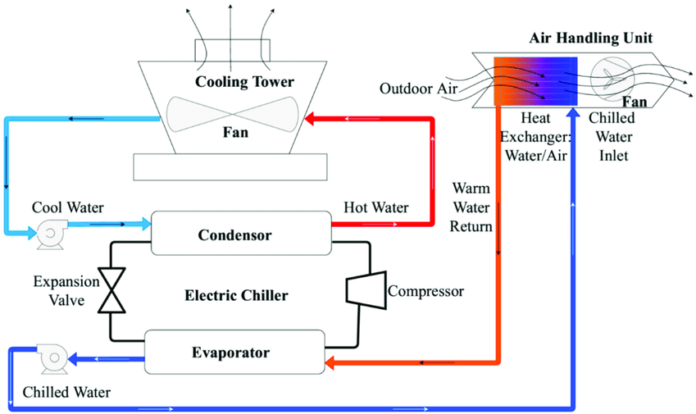We are sentient beings. Everything around us affects us in both ways. It encourages us or discourages us. Among these things include air. It makes the most of the contributions. It gets heated and affects us. Also, it cools down and affects us. In the same manner, if the air is clean, it affects us and if it carries pollutants, it affects us.
Owing to that, it needs to be maintained as safe and beneficial for the ones under its effect. Maintaining the air in the outdoors is a mega project that would require all the governments to work together. While maintaining the air in the indoors simply requires heat ventilation and air conditioning or an HVAC system.
What Is An HVAC System?
HVAC system stands for heat ventilation and air conditioning. The HVAC system controls the air in matters of keeping the air quality optimum and heating or cooling it as per the requirements. This system is important for projects from single-family residential projects to huge airport stations. It is mainly considered a subdivision of the mechanical part of the building. Thus, mechanical estimating services can be of great help.
This system is made out of its various components, like other systems.
Components of HVAC Systems
The heat ventilation and air conditioning or HVAC system is an important system in all the buildings we reside or work in. These systems vary greatly for many reasons such as the capacity of the building. But overall, these systems include some common ones that constitute every such system. These are:
- Thermostat
- Duct Work
- Evaporator Coil
- Furnace and Blower Motor
- Refrigerant Lines
- Condensing Unit
- Heat Exchanger
All of these perform vital functions in the overall system and produce the desired results.
Let us now have a look at them separately:
Thermostat
The main component of a working HVAC system is the thermostat. It regulates the working and triggers the right instructions at the right time. If the temperature is as required the thermostat turns everything off. This way, it saves energy and produces the right results.
Duck Work
This particularly concerns the centralized system. The whole system is connected through ducts. These ducts carry the effect all around the system. Thus, the duct work needs to be flawless. The ducts are also combined with insulation that assists in the transfer.
Evaporator Coil
This is simply simple a metal wires house around the furnace. Their function is to absorb the heat and provide the cooling effect. Refrigerant flow through them that carry out the procedure.
Furnace and Blower Motor
The furnace creates heat while the blower motor blows the heat into the duct work. Hence, these two are the primary components of these systems. Their capacities define the overall functioning of the system.
Refringent Lines
These provide the pathway for heat as wires provide for electricity. These are normally copper or aluminum lines. Often to have the precise information about them piping estimating services are chosen. They run between the evaporator coil and the outdoor condensing unit.
Condensing Unit
As the furnace heat, the environment the indoors, condensing unit does the opposite. It absorbs the heat from the indoors and expels it into the outdoors. This works for the cooling concern as the furnace does for the heating.
Heat Exchanger
As the thermostat calls for heat, the heat exchanger is kicked. It warms up and circulates the heat around the system.
Conclusion
The HVAC system is vital for all sorts of buildings we reside and work in. This system performs the vital function to maintain the air as it should be. This system contains various components. These components combine to provide the required effect. To understand them before acquiring them certain information is needed. This can be available with HVAC estimating services.
